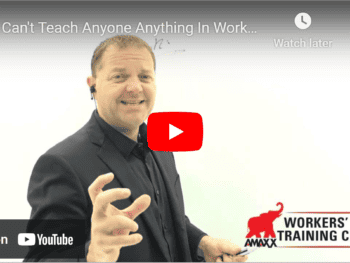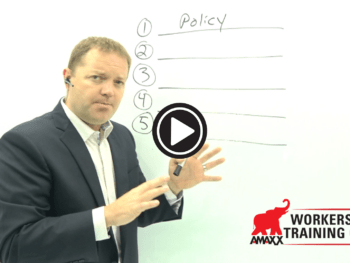What Do I Do? What Do I Do?
Those of us who cook know the time-tested technique for testing spaghetti doneness: toss a few strands up against a wall and if it sticks, it’s done – if not, well, it falls off the wall. So, what does spaghetti have to do with assessing your workers’ compensation program?
Many companies use the dartboard approach to control workers’ comp costs. They look into the global “pot” of work comp practices, pick out one or two, toss a solution against the wall, and hope it sticks. In other words, without really knowing what to do, they decide to “fix” some part of their WC program – an unplanned, unsuccessful and most likely costly approach.
Unfortunately, more than 75% of companies try to work backwards toward improvement by reviewing the capabilities of their service providers and vendors rather than assessing the key problem areas in their own companies to determine the types of services ultimately needed.
Worker’s comp costs cannot be controlled on a “hit or miss” basis. A solid workers’ compensation program begins with a careful assessment of what is in place now, rather than assessing your service provider’s capabilities. Only by analyzing your company’s current trends and weaknesses are you then able to select appropriate solutions and vendors to integrate into a comprehensive cost control program without overlap or gaps.
A reasoned, impartial assessment and needs analysis is an indispensable part of an overall quality improvement process. It means determining how effective existing program elements are, not merely whether the elements exist. Solutions and recommendations for changes, upgrades or revisions in current practices are then based on a complete understanding of the “key cost drivers,” factors at the root cause of your company’s high costs.
If your workers’ comp costs are sky high, perhaps you are like one company, believing its managed care program was complete, but with $30 million in annual workers’ compensation costs. In turns out their employee brochure containing all the necessary information was written at the 11th grade level (like the Wall Street Journal), well above many of its employees reading abilities. Not effective!
Where Do I Start? Where Do I Start?
As companies reposition themselves to be more cost effective and competitive in today’s marketplace, a thorough assessment of a company’s workers’ compensation program identifies problem areas responsible for escalating costs. Only after identifying the causes of these costs, can a company evaluate its program and develop a strategic plan to control and reduce workers’ compensation costs.
First, decide if your company wants to devote internal personnel to a workers’ comp assessment process. Assessing a multi-state, multi-site company is time-consuming and many companies outsource such a project. In certain cases, a joint effort between internal personnel and outside consultants works well.
Consider the following points when deciding who will perform the assessment:
1. How will the assessment be used?
2. What are the budgetary constraints?
3. Are internal personnel available to assist? The argument for internal personnel is their greater knowledge of the corporate cultural attitudes affect workers’ compensation. On the other hand, external or independent consultants are impartial and may have experience assessing a broader range of companies.
During the pre-audit phase, reach an agreement on the purpose and scope of the audit, expected results and the content of the finished product.
Be thinking about these questions:
Is the purpose to:
1. Determine causes of escalating costs?
2. Improve internal procedures?
3. Select a new claims handler?
4. Are multiple purposes? If so, prioritize, highest to lowest?
What will the finished product look like?
1. One report from a corporate perspective?
2. A separate report detailing each operating unit’s practices?
3. An oral presentation to upper management?
4. Contain “Findings” as well as corresponding “Recommendations?”
It is important to know the intended use before going into the audit because the purpose and priority dictates the content of the assessment inquiries. And, intended use of the assessment dictates the format of the finished product.
An Assessment Report is a means to an operational end, not a well-written, handsomely bound report sitting on a shelf. It is a living, working document.
Author Robert Elliott, executive vice president, Amaxx Risks Solutions, Inc. has worked successfully for 20 years with many industries to reduce Workers' Compensation costs, including airlines, health care, manufacturing, printing/publishing, pharmaceuticals, retail, hospitality and manufacturing. He can be contacted at: Robert_Elliott@ReduceYourWorkersComp.com or 860-553-6604.
Podcast/Webcast: How To Prevent Fraudulent Workers' Compensation Claims Click Here http://www.workerscompkit.com/gallagher/podcast/
Fraudulent_Workers_Compensation_Claims/index.php
FREE WC IQ Test: http://www.workerscompkit.com/intro/
WC Books: http://www.reduceyourworkerscomp.com/workers-comp-books-manuals.php
WC Calculator: http://www.reduceyourworkerscomp.com/calculator.php
Do not use this information without independent verification. All state laws vary. You should consult with your insurance broker or agent about workers' comp issues.
©2009 Amaxx Risk Solutions, Inc. All rights reserved under International Copyright Law. If you would like permission to reprint this material, contact Info@WorkersCompKit.com












